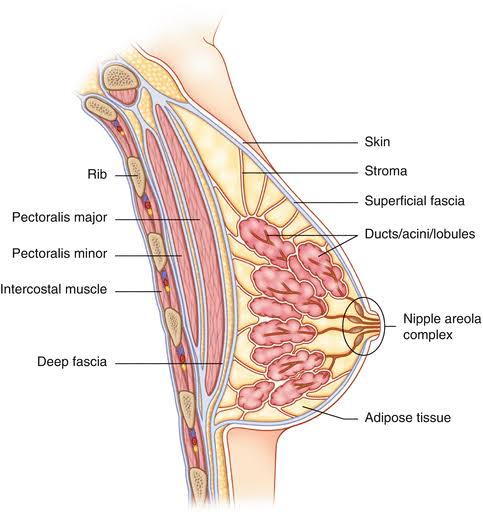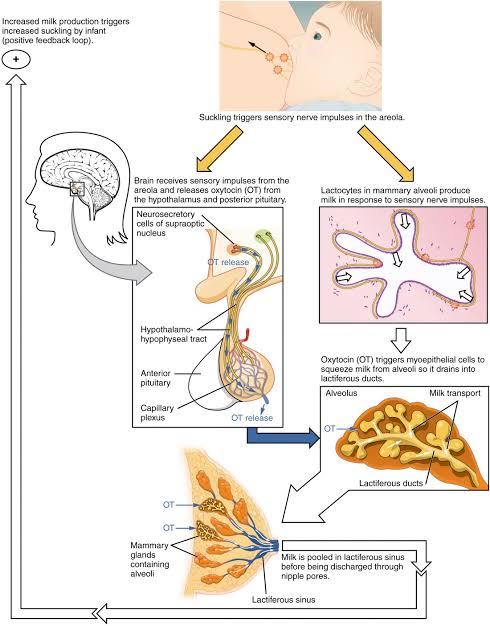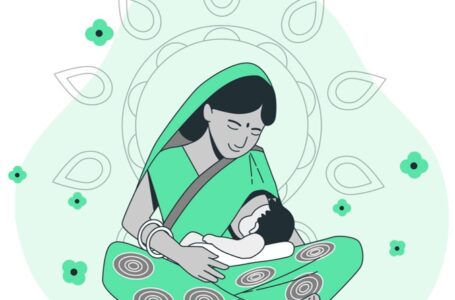Unfolding the Folds of Breast – World Breastfeeding Week 2021

“Breasts” Effected by Emotions & Cure in Homeopathy Explained
The Earth inhabits more than 6000 mammalian species at present, however, human females are exceptional life forms with permanent breasts. The breast of other mammalian species develop temporarily during ovulation and, or nursing for providing milk to their young ones at birth and when they no longer essentially survive on milk, the breasts become obscure. While the process is not the same for human females in whom the breasts develop during puberty and not pregnancy and remain as usual throughout life. Human males do have breasts but they are rudimentary and nonfunctional, unlike female breasts which produce milk during pregnancy.
In evolutionary biology, the breast or mammary gland is a modified sweat gland. The mammary gland lies in front of the chest wall and comprises specialized tissue called the glandular tissue and fatty tissue.

The specialized glandular tissue is the site where milk production takes place inside the lobes, which are 15-20 in number in each breast. The lobes are further connected to the ducts which facilitate the secretion of milk via the nipple, a pigmented, protuberant part on the outside. Thus, the biological and prime function of the mammary glands is to produce milk to feed the young ones and the process is called breastfeeding.

Mammary glands are not only involved in the human reproductive cycle but also in the development of the child following childbirth. Exclusive breastfeeding to the infant during the first year provides food and nourishment for growth and also supplements the complimentary health benefits to the mother and her infant. It also acts as a biological dialogue between a mother and her infant which helps to convey psychosocial communication and strengthen the bond between them.
To the nursing mother, physically, it helps to lose pregnancy weight as more calories are required to produce milk. Also helps the uterus to contract and reduces post-partum bleeding under the influence of Oxytocin, a hormone, the levels of which are elevated during breastfeeding. Various studies have certainly shown a proportional reduction of breast and ovarian cancer incidences in women who breastfeed in contrast to those who do not. Emotionally, breastfeeding helps lower the risk of postpartum depression and maintains a positive maternal mood.

Apart from providing nutrition, the health benefits to the infant are many. The antibodies present in the mother’s milk keep the baby protected from frequently acquiring respiratory tract infections, gastrointestinal infections, ear infections, bacterial meningitis, and is associated with a low risk of infant mortality. Breastfeeding also helps in the neurocognitive development of the baby, studies have shown that infants who have been breastfed have higher IQ and better mental health compared to those who have not been properly breastfed in terms of duration.

Keeping in focus the prime function of the breast of producing milk.
The breast biologically represents:
1 Respect
2 Nourishment
3 Mothering and nurturing
4 Acceptance
5 Sensuality
6 Sexuality
The breast problems can arise due to
Refusal to nourish self: An attitude towards self of not caring and neglecting the needs of oneself or placing everyone else before self can trigger breast affections.
Over-mothering and overprotection: To care and overprotect the child or anyone equivalent of being a child in a manner that even slight trouble seems to produce a state of anxiety and panic.
Overbearing attitude: When a female tends to take extra responsibilities which might not necessarily be a duty of her own but out of her mental orientation she does it.
While the milk ducts psychologically correspond to the separation conflict encountered when a female feels that her child or loved one whom she considers her child is being separated or torn away from her. This implies that any threat disrupting the well-being of the loved ones of a woman or causes a breach in their security, and endangers their life evoke the feelings of worry and insecurity, and may affect the breasts of their mother whether she is nursing or not or even has surpassed the childbearing age. As per the father of German New Medicine, Dr. Hamer quoted, “A woman associates the bond with her children and her partner predominantly with her breast. This is why diseases of the breast are the most common medical conditions in women”. While probing the biological conflict associated with the diseased conditions of the breast one should bear in mind the biological handedness of the woman. In a right-handed female, the right side of the body corresponds to her partner, father, workplace, and the left side is associated with her child, mother, pet, siblings in general. When doctors are dealing with patients with breast-related complaints especially in the homeopathic sphere they must inquire about the possible situations concerning their children, loved ones, or partner that may lead to the causative factor for the presenting complaint and also gives a broader and deeper understanding of the pathology.
Following are the abnormal condition of Breasts and their cosmetic homeopathic treatment.
* Breasts are small with infertility – Medicine is iodium.
* Breasts become small with small hard lumps it – kreosotum.
* Full-grown breasts going small rapidly. – chimaphila.
* Breasts are going atrophied leaving a flaccid bag like skin. – conium .
* breasts become small with ovarian dropsy. – iodum.
*Breasts small with ovary complaint. – baryta carb.
* Breasts become small in nursing woman – lac can.
* One breast smaller than other – sabal serulata.
* Underdeveloped breasts with delayed or absence of menses- lycopodium.
* Breasts are rounded and beautiful become flat and out of shape with a lean body. – nux , mos.
* Breasts underdeveloped with infantile uterus and ovaries. – onasmodium.
* Defective development of breasts with delayed puberty and stunted growth. – pituitarin.
* Underdeveloped breasts or sunken breasts due to the diseases of the uterus. – sabal ser.
* Breasts underdeveloped and shriveled with infantile uterus and ovaries and physical debility- sabal ser.
*Nipple is short and flat and instead of a projection, a depression exists – sarsaparilla.
*Imperfect development of breasts and uterus both – sulphur.
* Hypertrophy of breasts with pain during menopause –sanguinaria.
* Breasts hypertrophy too early in puberty – bacillinum.
* Nipples insensitive –sabal ser.
* Nipple small – pulsatilla, Iodum.
* Breasts too big – cyclamen, conium.
References:
1) DC Dutta’s Textbook of Obstetrics
2)https://www.who.int/news/item/15-01-2011-exclusive-breastfeeding-for-six-months-best-for-babies-everywhere
3)https://www.sciencedirect.com/science/article/pii/S1053811913005922
4)https://learninggnm.com/SBS/documents/i_breast.html
P.S.: Do share your feedback about the above content in the comment section. Also mention any particular topic you would like to know about.
Note: We at The Homeopath take our ethics very seriously. More information about it can be found at Disclaimer page of our website.






2 Comments
Perfectly explanation!!
Kindly give references of homeopathic therapeutics too.
also clarify: Breasts are rounded and beautiful become flat and out of shape with a lean body. – nux , mos. – Is it Nux vom+Moschus or is it Nux moschata?